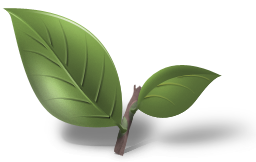Does anyone know anything about how American tea-service and home economics are connected? I came to the conclusion that they must be while trying to figure out the origin of an odd dish that was shared by both American Bed & Breakfasts, American "church tea" culture, the Red Hatters, the Junior League, and the recipe books of older American tearooms like the Wenham Tea House, something called an "Ambrosia Salad", which depending on who you ask is a mixture of marshmallows and mayonnaise or oranges and coconut cream, or Cool-Whip and pineapples, or perhaps all of those jumbled together.
The common thread was the connection to home economics classes, where this dish was often used as an example, apparently, and then it being preyed on by various magazine advertisers over the years to add or replace ingredients with branded products.
(The original 19th century version seems to have been fresh cut oranges topped with sugar and freshly grated coconut, and then allowed to sit so that the coconut softened in the residual juices and sweetened in the sugar, making a sort of orange cream of coconut fruit dessert, as far as I can gather, and was just called Ambrosia. Then dried coconut rehydrated in milk or cream replaced the fresh in some places, and the new canned pineapple out of Hawaii was added to the mix, and the marshmallow manufacturers tried to insert themselves as a replacement for both the sugar and coconut, only partially succeeding, and leading to various recipes that include both coconut and marshmallow, marshmallow and alternate nuts like pecans, or all of them together. The mayonnaise variant seemed to develop after the name changed from Ambrosia to "Ambrosia Salad", possibly through another of those advertiser battles vs. cream, sour cream, and later Cool-Whip to be the new dressing.
Was learning how to serve tea a common part of these classes? How were these courses developed? I know that if tea was given any attention at all, it would only have been one part of a larger package, but I doubt that America had it's own version of the tea ceremony masters who kept the lights on teaching young ladies how to make tea at Japanese finishing schools where they were also learning about incense and dance, but I could be wrong there. The closest I can think of is Dorothea Johnson of the Protocol School of Washington, who became famous for her presence at diplomatic teas.
Any advice here other than a few days spent browsing Google Books?
